A 2018 study entitled “Reducing food’s environmental impacts through producers and consumers” shook the world with findings that concurred that veganism is the single most impactful thing one could do to save the environment. I wanted to uncover just some of the environmental benefits of veganism and how YOU can make a difference with your diet.
People go vegan for a variety of reasons. For me, the primary reason was the environmental benefits veganism reaps. I wanted to share with y’all these environmental benefits and how you can make a difference through your diet!
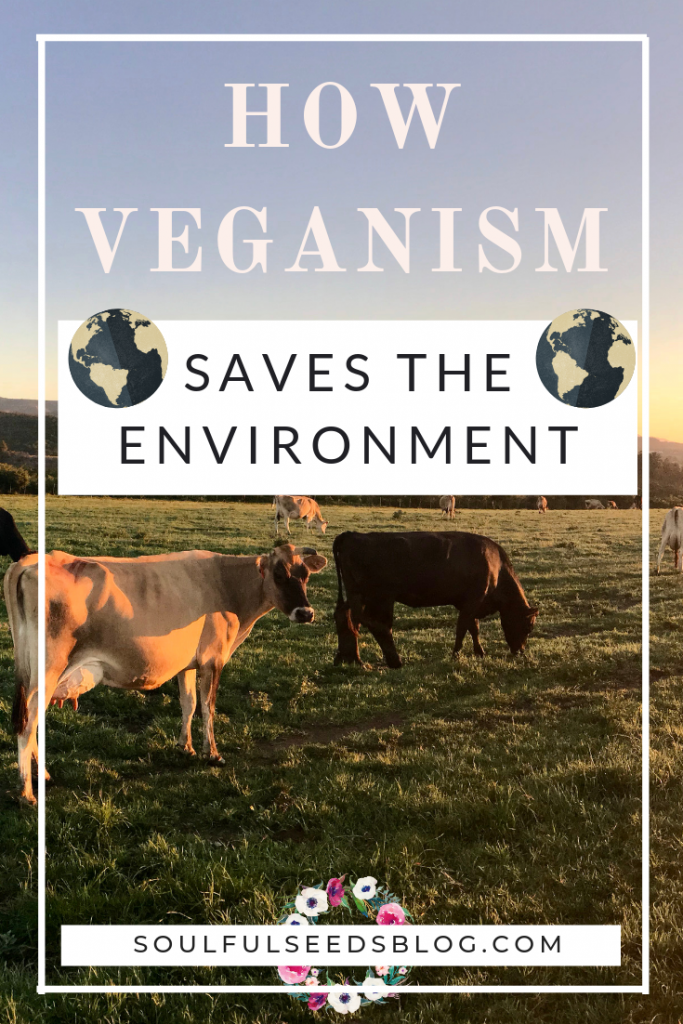
Fast Facts
I’m going to be going over basic facts about the impact veganism has on the environment in different categories, highlighting how it affects greenhouse gas emissions and resource use. This information is by no means comprehensive; there is SO much information and research that will bolster what is said here.
Greenhouse Gasses
- Agriculture accounts for about 25% of greenhouse gas emissions, 80% of that coming from animal agriculture (http://www.pnas.org/content/113/15/4146.abstract)
- Steinfeld, H., Food and Agriculture Organization of the United Nations., & Livestock, Environment and Development (Firm). (2006). Livestock’s long shadow: Environmental issues and options. Rome: Food and Agriculture Organization of the United Nations.
- Animal agriculture produces more greenhouse gases than the ENTIRE transportation industry (http://www.pnas.org/content/113/15/4146.abstract)
- (Steinfeld, 2006)
- The livestock sector of agriculture emits 37 percent of anthropogenic methane, which has 23 times the global warming potential of carbon dioxide.
- (Steinfeld, 2006)
- Livestock + livestock byproducts (cheese, eggs, milk) account for 32,000 Million Tons of CO2 per year, which is 51% of all worldwide greenhouse gas emissions.
- Goodland, R Anhang, J. “Livestock and Climate Change: What if the key actors in climate change were pigs, chickens and cows?”
Resource Use - Water
Animal agriculture is an industry that uses so much water because not only do the animals need drinking water, but the mass amount of crops and plants the animals need to eat (grains, corn) need to be watered as well.
The amount of water used to sustain the animal agriculture industry is insane.
According to the National Geographic, “cutting consumption of animal products in half would reduce the U.S.’s dietary requirements of water by 37 percent”.
We need water to survive, and so do the animals that are raised as livestock for human consumption. This explains why animal agriculture is responsible for so much of our water use.
When we think about our water footprint, we tend to think of our direct water use- how long we shower for, how often we use the sprinklers, etc. Our virtual water use– how much water it takes to produce the things we purchase, is just as important.
- Total amount of water needed to produce:
- 1 lb of beef = 1799 gallons
- 1 gallon of milk = 1000 gallons
- 1 lb of pork = 576 gallons
Resource Use - Land
An absurd amount of grazing land is needed to sustain the animal agriculture industry. This land, which is cultivated for the sole purpose of grooming animals that will later be slaughtered, is not able to be used for growing crops that humans eat directly.
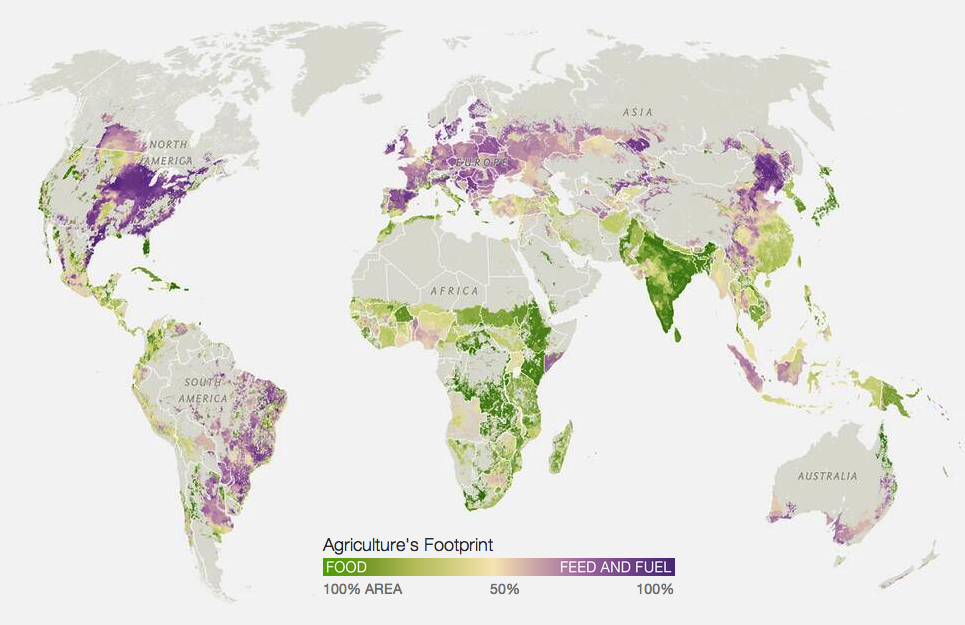
- Livestock is the world’s largest user of land resources, with pasture and arable land dedicated to the production of feed representing almost 80% of the total agricultural land. (http://www.fao.org/animal-production/en/)
- One-third of global arable land is used to grow feed, while 26% of the Earth’s ice-free terrestrial surface is used for grazing. (http://www.fao.org/animal-production/en/)
Resource Use- Feed
Cows eat a lot more than humans do. In order to grow animals, farmers have to give their animals a whole lot of feed. The production of meat, milk and eggs leads to an enormous loss of calories grown in fields, since cereals and oil seeds have to be cultivated to feed to animals.
To put it simply, animals consume way more food than they produce.
According to the United Nations Environment Programme, “the calories that are lost by feeding cereals to animals, instead of using them directly as human food, could theoretically feed an extra 3.5 billion people.”
While starvation is rampant in both developing and developed nations alike, the sheer amount of feed given to animals can and SHOULD be instead given to hungry humans.
- Feed conversion ratios measures the ratio of the amount of feed crops needed for an animal to produce one unit of meat.
- Averages for crop-fed, factory animals (>98% of farms in America) are:
- 25:1 – beef cows, 9.4:1 – pigs, 4.5:1 – chickens – Smil (EM/2008 via UKY) (researcher)
As you can see from the various information and graphics in this article, the environmental benefits veganism reaps are abundant. There is so much waste generated simply because humans like the taste of meat.
I hope I was able to just touch the surface in showing y’all the environmental benefits of a vegan diet.
For more information, check out these amazing vegan resources that have informed me on various topics, like this one.

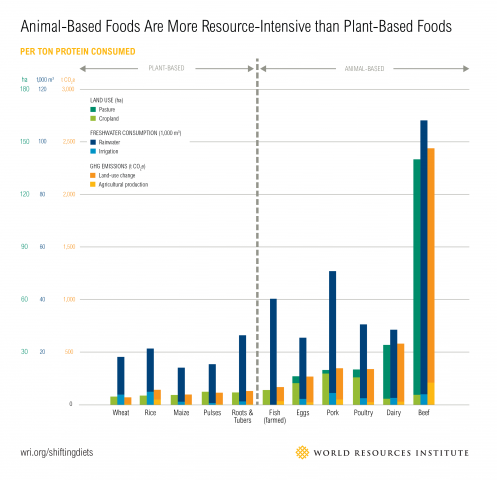
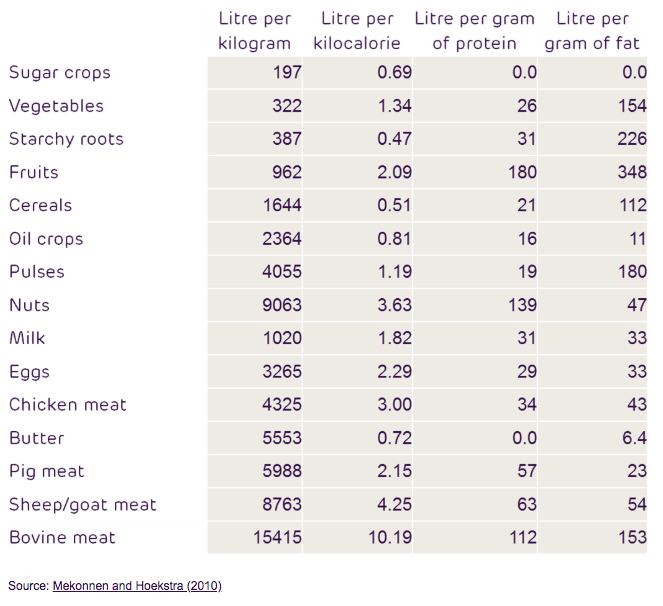
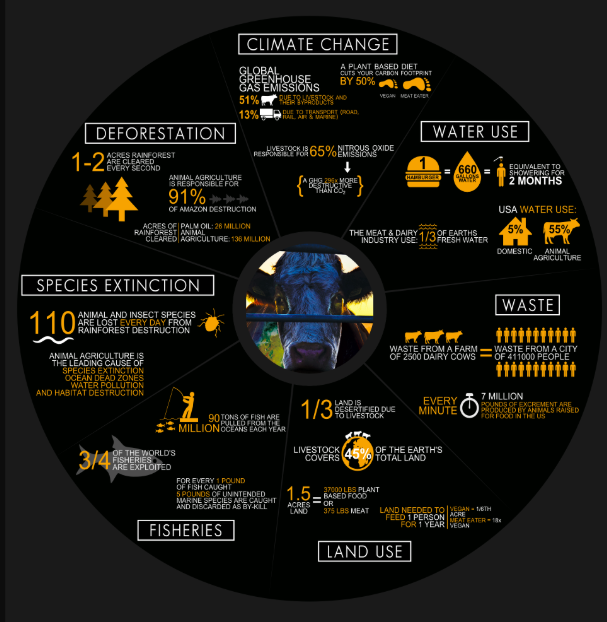
Pingback: What COVID-19 Can Teach Us About Climate Change Action |